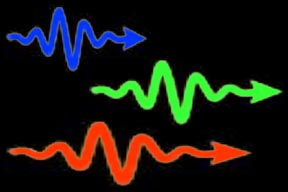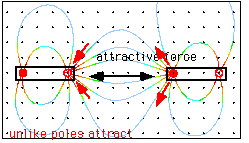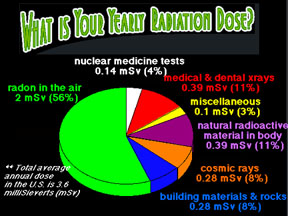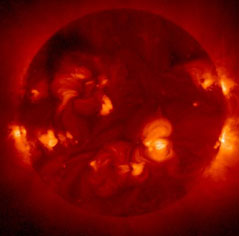This is an X-ray image of the Sun taken with the Soft X-Ray Telescope (SXT) on the orbiting Yohkoh satellite. This particular image was taken on November 23, 1999.
Click on image for full size
ISAS/Yohkoh team/Lockheed Palo Alto Research Laboratory
X-ray Radiation
X-rays are a high-energy type of electromagnetic
(EM) radiation. X-ray radiation has a much shorter wavelength than visible
light, so X-ray photons have
much higher energies than photons of light.
X-rays lie between ultraviolet "light" and gamma
rays on
the electromagnetic
spectrum. X-rays have wavelengths between about 10 nanometers (10 x 10-9 meters)
and 10 picometers (10 x 10-12 meters).
X-ray radiation oscillates at rates between about 30 petahertz (PHz
or 1015 hertz) and 30 exahertz (EHz or 1018 hertz).
X-rays are subdivided into hard X-rays and soft X-rays. The lower energy soft
X-rays have longer wavelengths, while the higher energy hard X-rays have shorter
wavelengths. The cutoff between the two types of X-rays is around a wavelength
of 100 picometers or an energy level around 10 keV per photon. X-rays with
energies between 10 keV and a few hundred keV are considered hard X-rays.
There is no sharp distinction between the highest energy X-rays and the lowest
energy gamma rays. The distinction between X-rays and gamma rays is actually
based on the origin of the radiation, not on the frequency or wavelength of
the electromagnetic waves. Gamma rays are produced by nuclear transitions,
while X-rays are the result of accelerating electrons.
X-rays have long been used to "see" through skin and muscle tissue to make
medical "X-ray images" of bones when checking for fractures. X-rays that arrive
at Earth from space are absorbed by our atmosphere before reaching the ground.
You might also be interested in:

Electromagnetic radiation is the result of oscillating electric and magnetic fields. The wave of energy generated by such vibrations moves through space at the speed of light. And well it should... for
...more
Light is very strange. Sometimes it is best to think of light as a series of waves. At other times, it is useful to think of light as a swarm of particles. When we think of light as particles, we call
...more
The thermosphere is a layer of Earth's atmosphere. The thermosphere is directly above the mesosphere and below the exosphere. It extends from about 90 km (56 miles) to between 500 and 1,000 km (311 to
...more
The Hubble Space Telescope (HST) was one of the most important exploration tools of the past two decades, and will continue to serve as a great resource well into the new millennium. The HST found numerous
...more
Earth's magnetosphere shields our planet from most of the solar wind. Some solar wind particles do leak in and combine with ions escaping from the top of Earth's atmosphere to populate the magnetosphere
...more
Electricity and magnetism are two very important topics in the science of physics. We use electricity to power computers and to make motors go. Magnetism makes a compass point North and keeps notes stuck
...more
Radiation comes in two basic types: electromagnetic radiation transmitted by photons, and particle radiation consisting of electrons, protons, alpha particles, and so forth. Electromagnetic radiation,
...more















